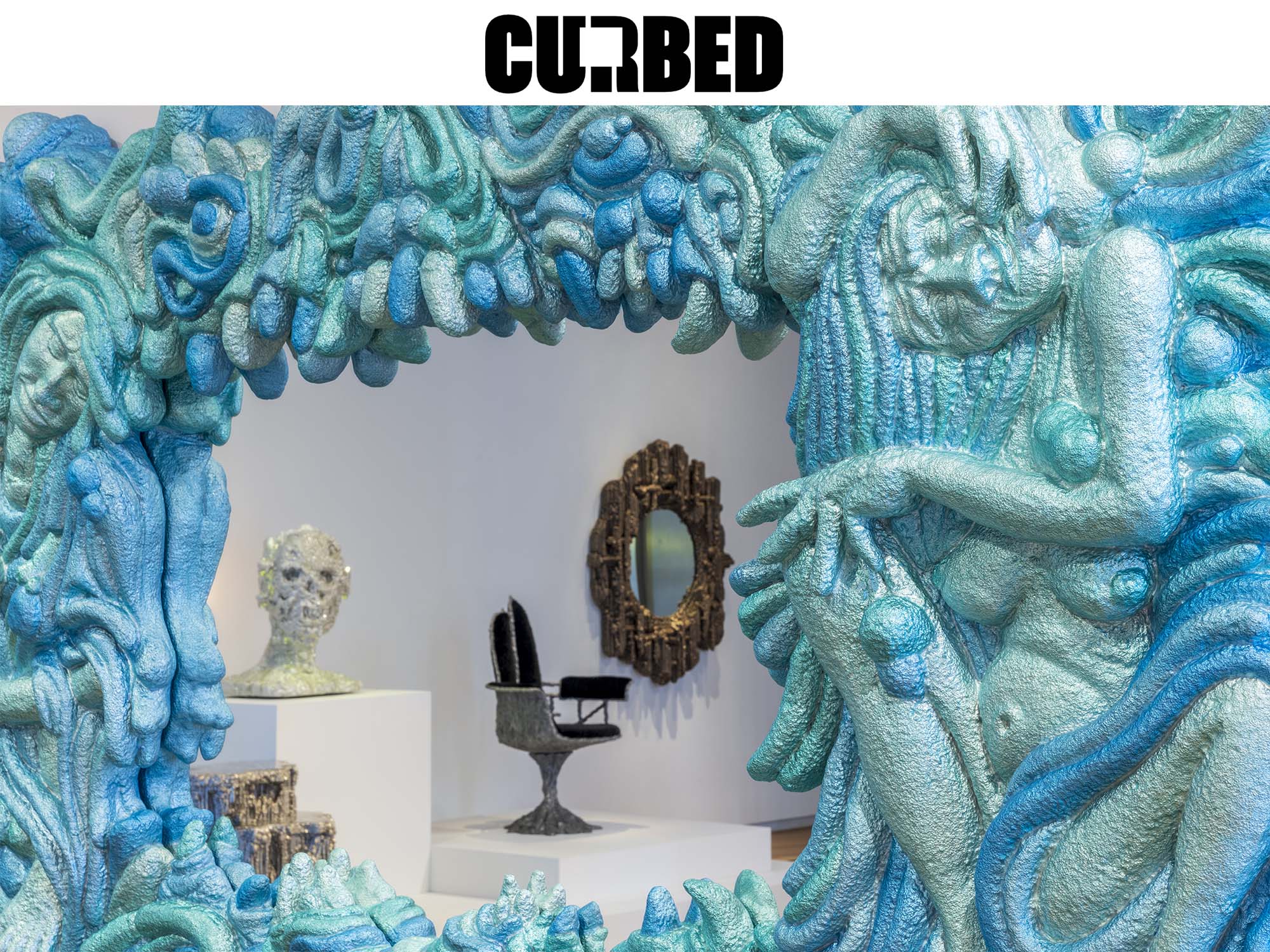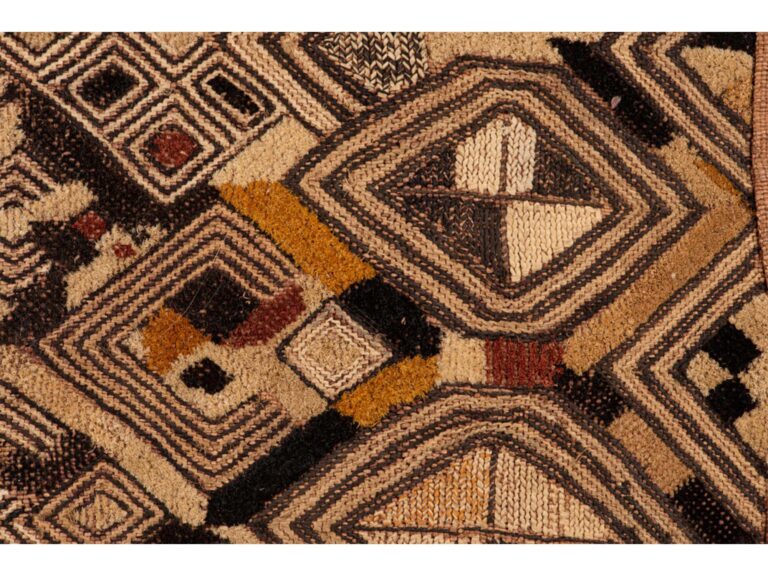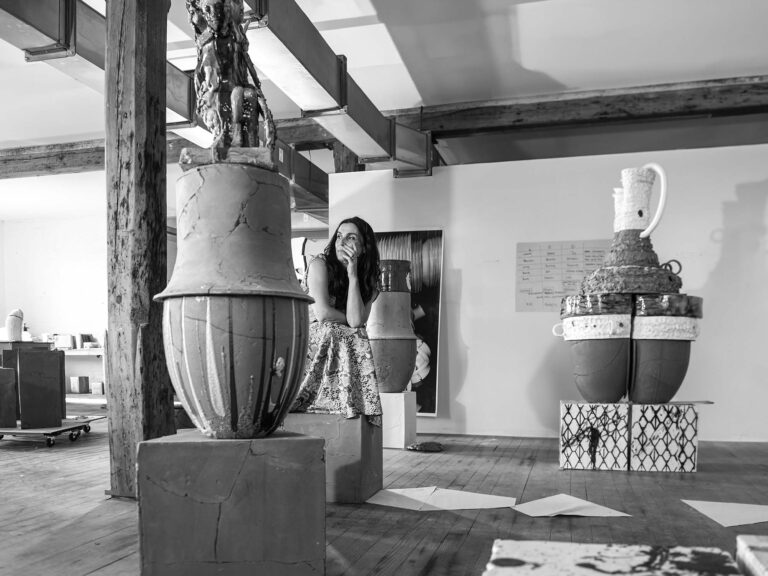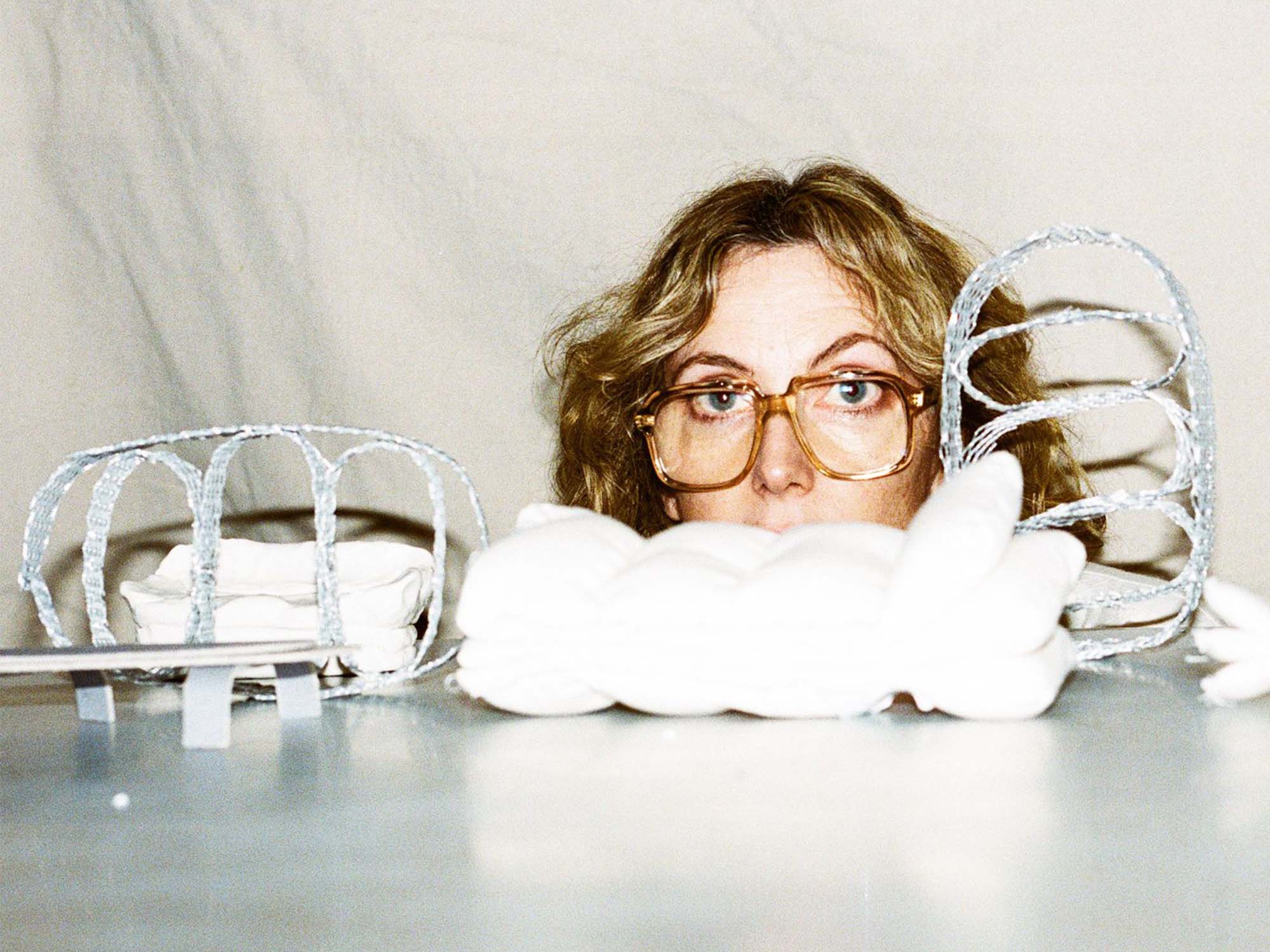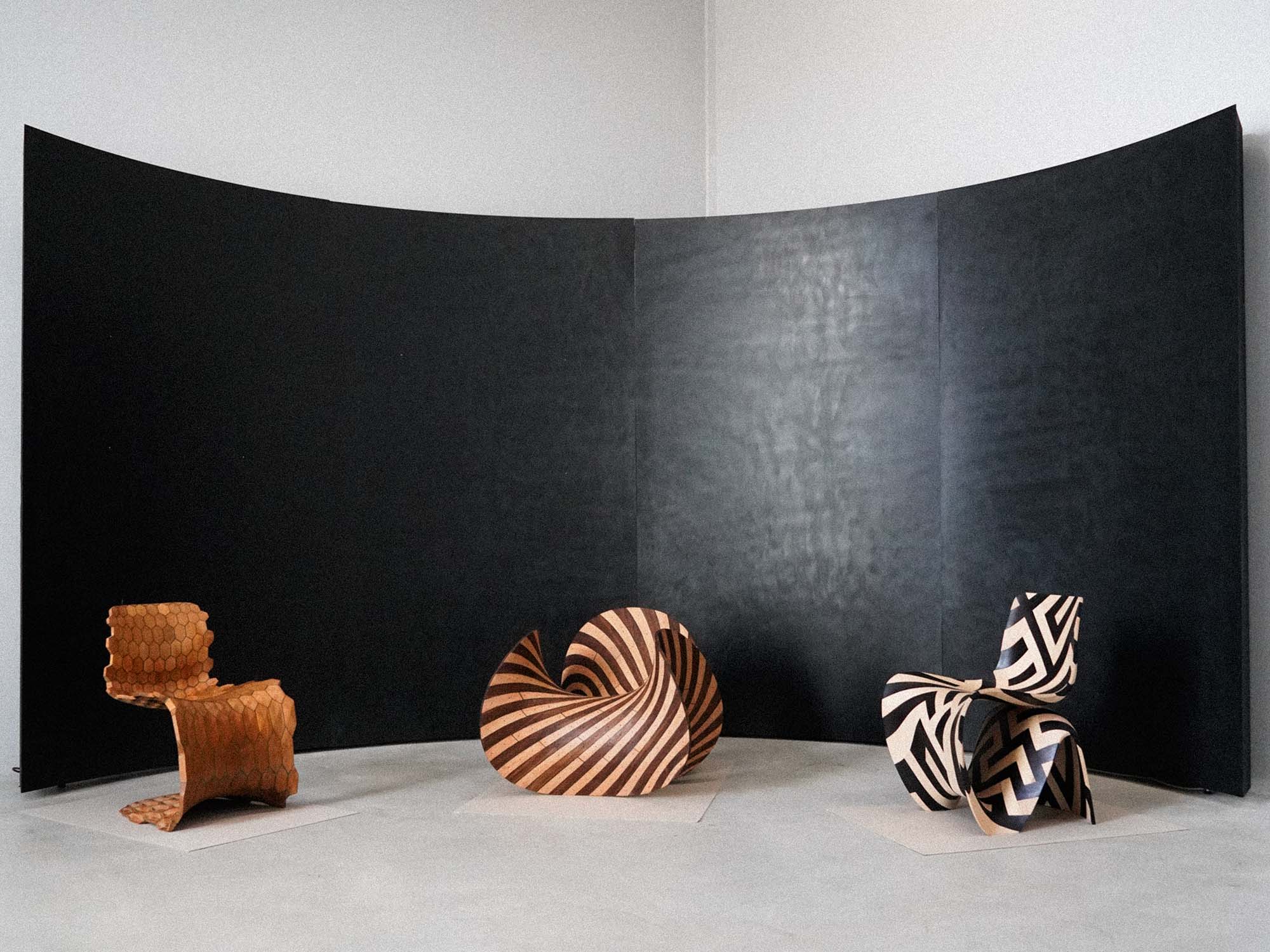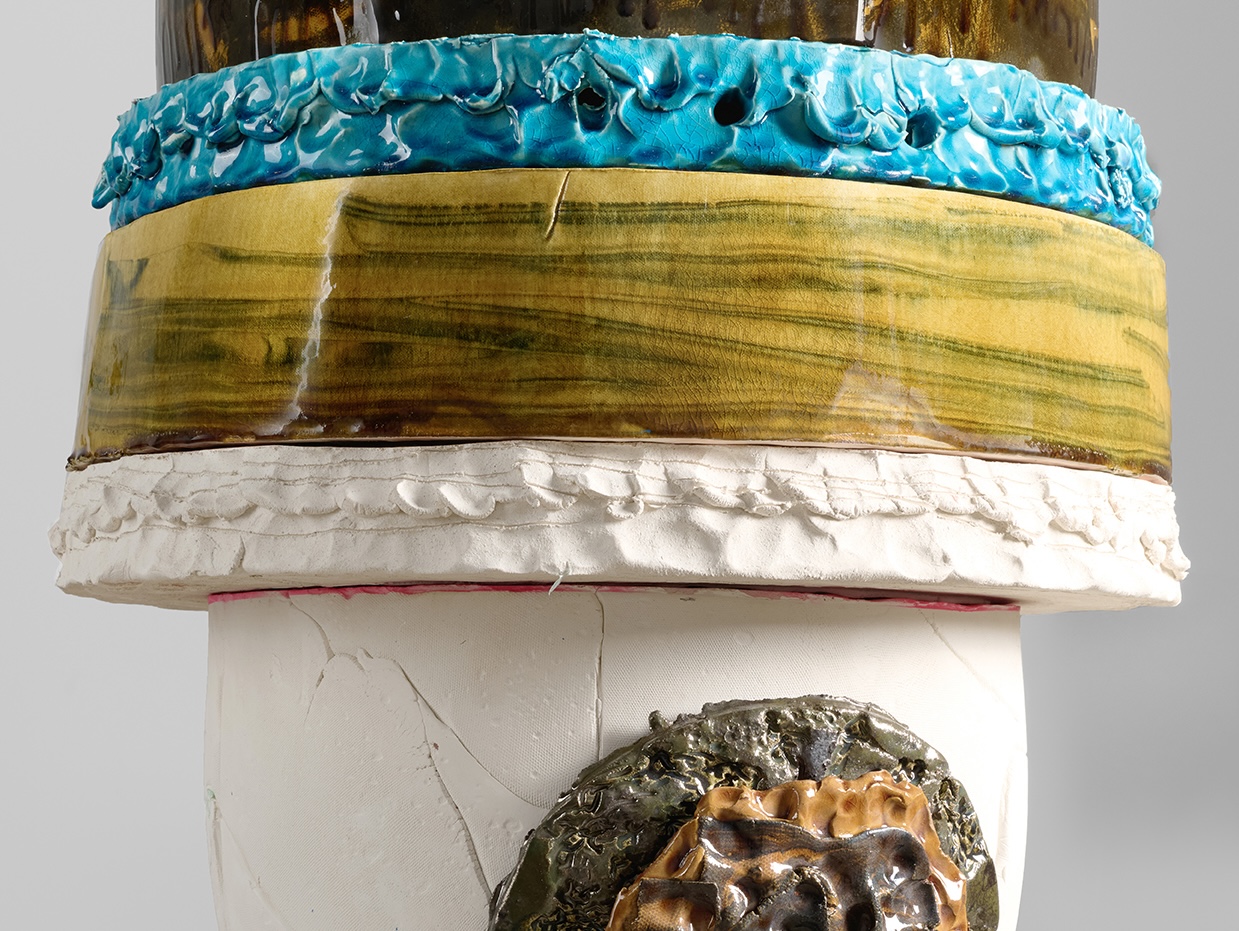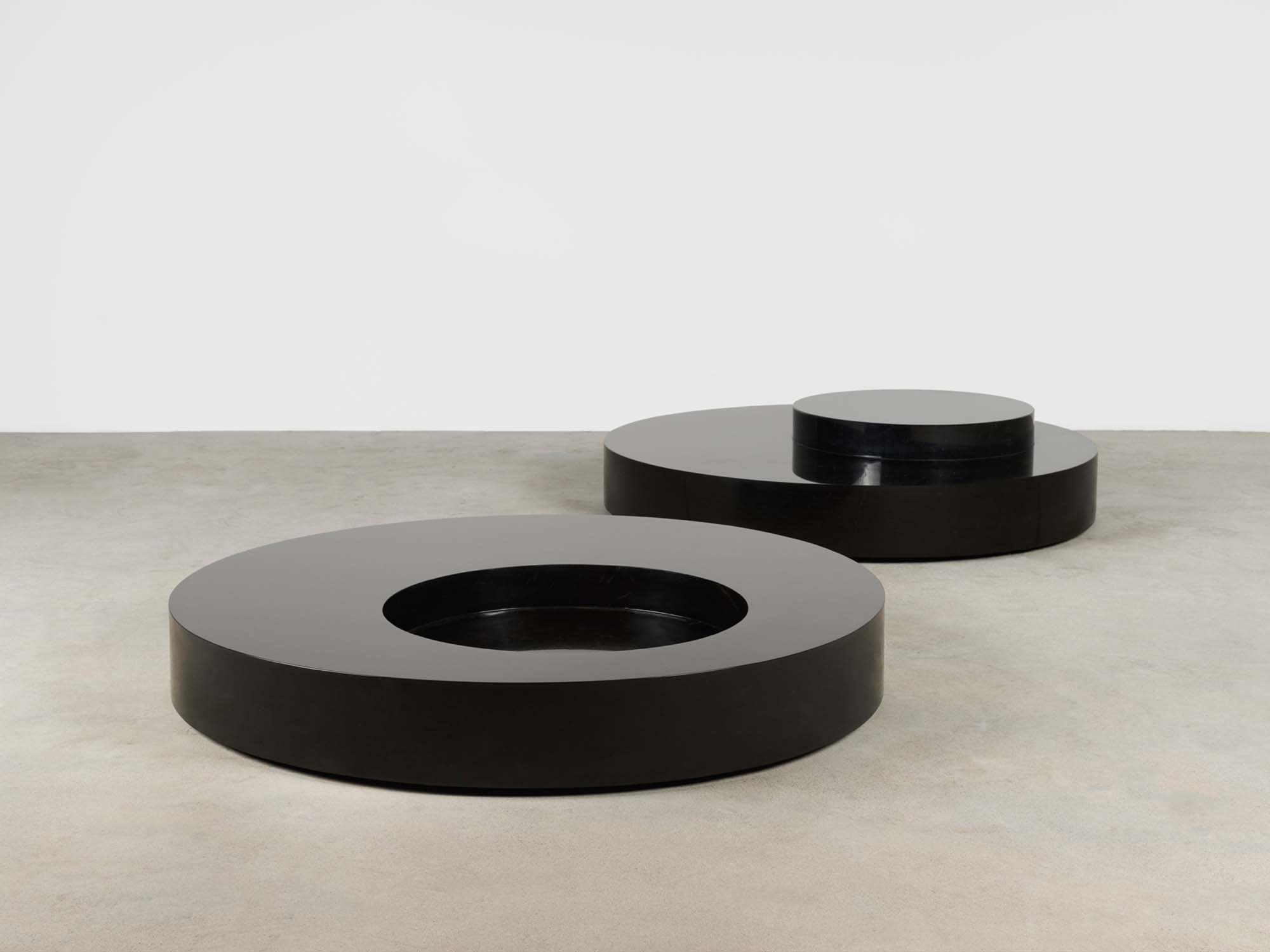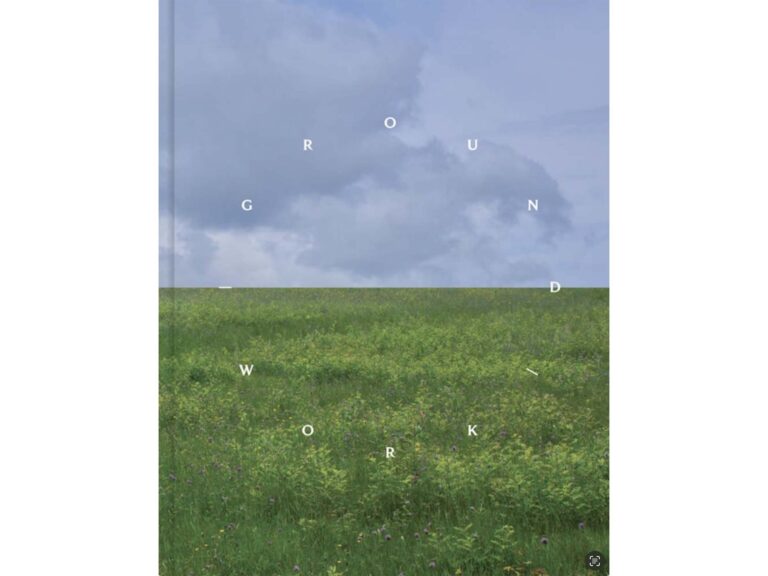By Diana Budds
Chris Schanck usually works out of his studio in a converted 1920s machine shop in Banglatown, a vibrant enclave of Bangladeshi immigrants just north of downtown Detroit. But the designer has found a second office, so to speak, at the main branch of the city’s library — an opulent 1920s Cass Gilbert building filled with travertine floors, coffered ceilings, and frescoes. “The library, as you could imagine, is underused,” he says. “There are these vast, 15- or 20-foot-long oak tables that are empty. You can take over one of these boardroom-sized workstations and study in privacy.” He visits the library frequently these days as the pandemic afforded him more time to reflect on a decade of making his surrealist furniture. He’s one of the most successful contemporary designers to have found his voice in the gray area where art and design meet, known for a body of work composed of found materials covered in layers of shimmering foil and glistening resin. Two dozen of these pieces — including a pendant light composed of twisted machine parts that could have come from the set of The Matrix and a wood cabinet that’s being devoured by cotton-candy-pink ooze — are on view in his first retrospective exhibition, “Chris Schanck: Off World,” which runs at the Museum of Arts and Design through January 2023.
At the library, Schanck got the idea for the name of the exhibition from Roberta Rogow’s 1991 book Futurespeak, a glossary of over a thousand sci-fi and fantasy terms. The phrase off-world was first used in the 1950s and means something that isn’t native to Earth. It’s a natural fit for his strange-looking yet mesmerizing work. “You could take most of the show and put it in a bad science-fiction movie and get away with it,” Schanck said jokingly. (In reality, his work winds up in collectors’ homes and in luxury boutiques.) The phrase took on another meaning during the pandemic. “Tragedy hit closer to home with friends and family,” he says. “The term off-world hit me as, This is the last thing all of us will ever do: die and pass to the afterlife.” Thinking about off-world in terms of death and what lies beyond it, he drew more instinctively — an activity he hadn’t had as much time for before the pandemic — and reevaluated his relationships with his loved ones including his artist mother. This shift brought his work into territory that’s more personal and optimistic with free-flowing shapes and figurative references that appear less like the fossilized-looking objects he’s made over the past decade and more as though they’re alive.
“I called my grandparents more frequently during the pandemic, and we had some great conversations. They talked about growing up in the war and collecting scrap metal and how smallpox was still prevalent at the time. It was this invisible enemy that nobody understood but everyone felt susceptible to. I asked them what it was like, and they said it was scary and stressful, but they were also kids and were resilient. I started reading about previous plagues, specifically the Middle Ages, and the symbolism that emerged during that time. The figurative motif on the top of Mortal Bench is called ’death and the maiden’ and there are countless examples of this in art history, starting in the Middle Ages. It’s always a young woman, and then across from her is a manifestation of death. It means, ‘Remember, you will always die.’ It isn’t pessimistic symbolism; it’s realistic and hopeful. The point is, ‘Remember to be grateful for the days that you have and make the most of them.’ The oval seating arrangement relates to time. You might find a form like this in a train station or an old hotel lobby. It’s more of a seat you would sit in while you wait for something. I liked the idea that it related to a sense of time.”
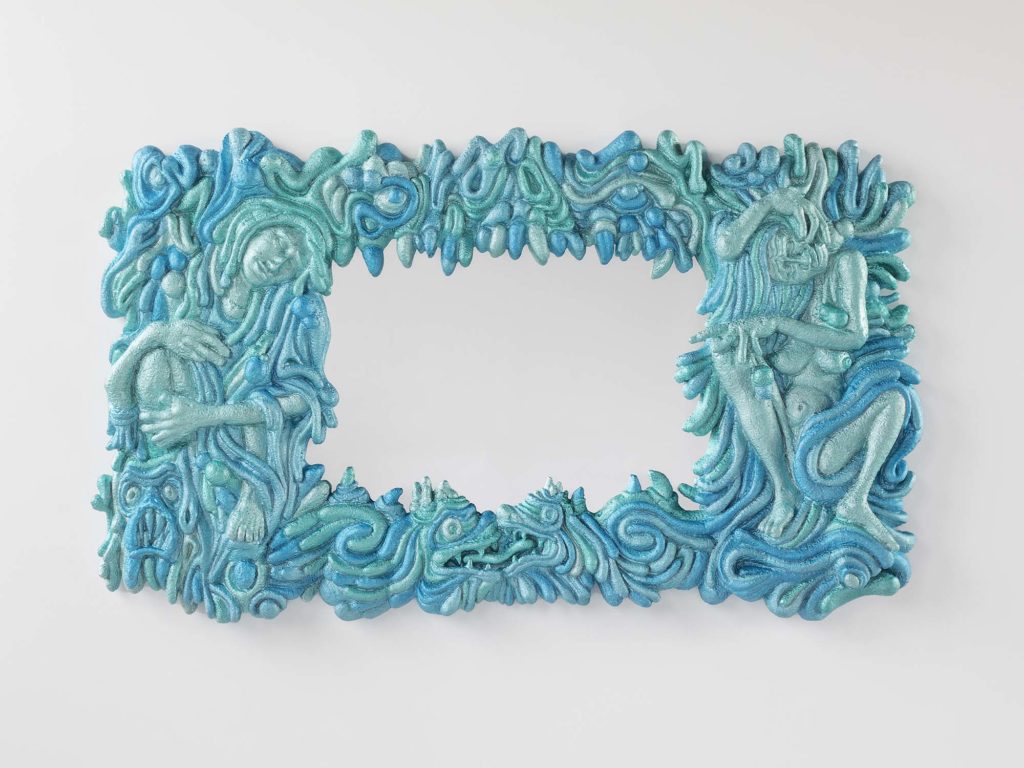
“This is based on a Sylvia Plath poem called ‘Mirror.’ It deals with the fear of aging and not just deteriorating physically but also having a lack of meaning and not knowing one’s origins. The tone to me is almost like an existential horror. I also think it’s extremely relatable. The woman in the poem resents the mirror and prefers moonlight and candlelight. As I was reading the poem, I realized that there was this codependent relationship between the mirror and the woman that lasted a lifetime. We all have some level of vanity and examine ourselves in the mirror every day.”
“I got to a point, or maybe an age, where it became more and more important to me that the people I care about know what I do. I wanted to do a collaborative piece with my mother, who is also an artist, to reconnect to a creative thing that we had when I was young and because she, in her own words, had a complete misunderstanding of my work. She sculpted the form from materials she found on the beach and in abandoned lots near her home in Florida. She sent me this explosive form of twigs and sticks that was completely unstable but aesthetically powerful. I stabilized the form, applied color through tinted resin, and made it into a lamp. I realized through this piece that we have similar tendencies with materials and that our instincts are more aligned than I thought.
“When Mum’s Chandelier arrived in the studio, I thought, Let’s do this again but base it on where we are so it becomes geographically specific in a way. There’s more of a cyberpunk influence coming from me. We gathered materials from our yard and from scrap piles: postindustrial bits, sticks, and organic things. We attached these things to an armature through various methods of gluing, tying, and wrapping. Then we put it through a series of resin washes and automotive tint. I wanted to make something unidentifiable. With form, the less you can relate to it, the less baggage it has. Mystery and open-endedness lead to individual interpretation.”
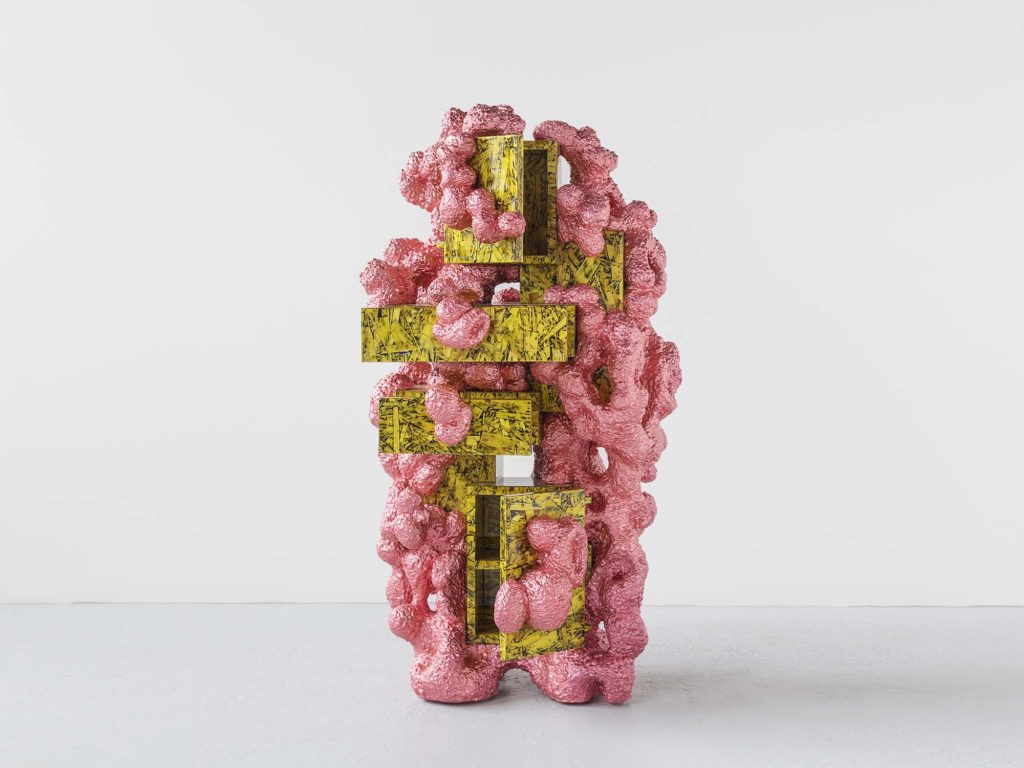
“OSB [oriented strand board] is a material I’ve been exploring for ten years. It’s the least expensive type of plywood, and because of the conditions in Detroit, it’s an extremely ubiquitous material. It’s used to board up foreclosed or abandoned homes as a last-ditch effort to keep out the elements — the elements being the most destructive thing behind human neglect. To get more value out of the material, it’s usually painted black, which gives it more lifespan. When I moved to Detroit after grad school into the house I still live in, it was boarded up that same way. I ripped off the plywood and sanded it down, and it was immediately transformed into this beautiful material that had so much depth. I slapped together a bookcase, coffee table, and chair for my house because my only job at the time was adjunct teaching, and I was living on a low salary.
“Over the past ten years, OSBs started to disappear as investors would buy up entire blocks of communities. So this was a piece of the local vernacular that was kind of vanishing — maybe for a good reason but maybe not; it’s too complex an issue for me to sort out entirely. We played with the material by applying a light wood dye. The piece is an abstraction of the way things that are neglected for great periods of time become a hybrid of the industrial and the organic. So the simplest example is a tree growing through a chain-link fence. To separate the two would destroy the integrity of the fence or part of the tree, so they become linked. This hybridity happens a lot in my neighborhood, like vertical gardens grafted onto houses. This time of year, it looks apocalyptic, but come spring and summer, everything blooms, and there’s squash, beans, and flowers everywhere. Every single family has a garden in their backyard. The piece is supposed to feel organic and moving and growing — a mirror to the richness and beauty that’s part of the annual cycle here.”
